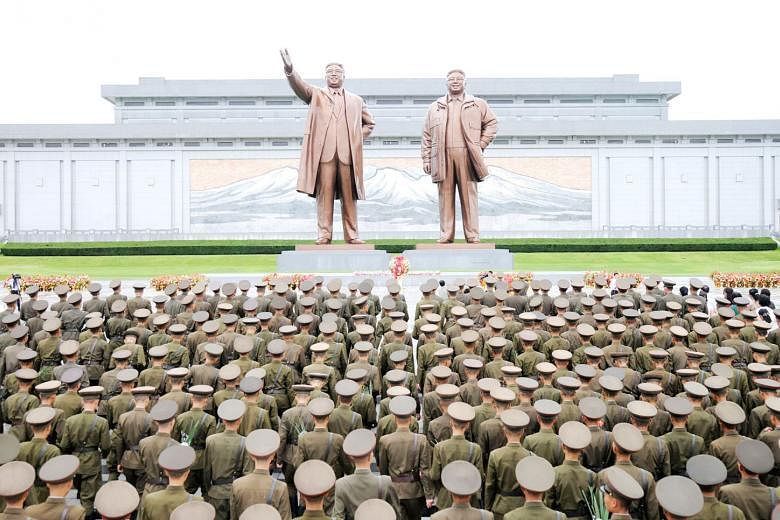While US President Donald Trump threatened "fire and fury" against North Korean provocations last week, Secretary of State Rex Tillerson was in South-east Asia to attend the Asean ministerial meetings and for visits to Thailand and Malaysia, reiterating the administration's wish for America's allies in the region to do more to contain the Kim Jong Un regime.
Many South-east Asian nations maintain economic and diplomatic ties with Pyongyang. The Peterson Institute for International Economics estimates total Asean-North Korean trade at US$181 million (S$247 million) annually. The Philippines is reportedly North Korea's third largest trading partner after China and India. In February, two individuals acting on Pyongyang's behalf assassinated Mr Kim Jong Un's half-brother Kim Jong Nam in Kuala Lumpur's airport. Pyongyang's tentacles reach throughout the region, and Asean states play an important role in making sanctions against North Korea effective. Their collective power (along with China's) leads Washington to believe they might be the "trump card" in halting Mr Kim's nuclear programme.
But the Trump administration's single-minded preoccupation with North Korea risks overshadowing attention on South-east Asia, a region of vital interest to the American economy and the locus of increasing superpower tensions with China in the maritime commons. The South China Sea contains the shipping lanes for over US$3 trillion in trade flows each year. And it is the site of a contest over international law and order, as Beijing attempts to gradually push the US military presence out of its strategic backyard. Instead of embracing economic opportunities in South-east Asia (Asean's combined gross domestic product was US$2.4 trillion in 2015), the Trump administration withdrew from the Trans-Pacific Partnership in its first week. This move dismayed regional partners who had hoped the trade pact would enmesh the United States in the region and lead to deeper security cooperation.
Washington has been distracted by the security threat posed by North Korea, leaving some South-east Asians frustrated that the US is not interested in discussing the issues they care about. While Mr Tillerson's visit to South-east Asia was timely and sent important signals about US engagement there, he could have used his trips to underscore the value of US alliances in South-east Asia and outline a broader strategy for the region. Thailand and the Philippines are estranged US allies, while Malaysia has become an important strategic partner in recent years. During the latter years of the Obama administration, domestic political change in Bangkok and Manila led to a cooling of ties with Washington. The 2014 coup in Thailand and the election of Philippine President Rodrigo Duterte last year necessarily brought about frictions in each country's bilateral ties with the US. The Obama administration was unable to do much more than condemn the democratic regression evident in both nations, urging Bangkok to restore electoral democracy and reducing military engagement with Thailand in order to signal disapproval.
The Trump administration showed early signs of its willingness to put these bilateral relations on a better track. Mr Trump called Mr Duterte in April to personally invite him to the White House, and Mr Tillerson met the Philippine leader in a last-minute meeting last week. The Secretary of State followed this controversial meeting by visiting Thai Prime Minister Prayut Chan-o-cha in Bangkok, the first such high-level meeting since Thailand's coup in 2014.

This trip builds on Mr Tillerson's hosting of Asean foreign ministers in Washington in May, a noteworthy scheduling feat and important opportunity to forge consensus with regional policymakers. But Mr Tillerson has repeatedly used these platforms to hammer home the Trump administration's overwhelming focus on the threat of North Korea, rather than to expand upon a broader foreign policy for the region. The US owes it to regional allies and partners to vocalise a vision that engages South-east Asian states for their own sake rather than their utility for Washington's chaotic North Korea strategy.
The US administration could benefit from listening more to the concerns of South-east Asian states and leaders, which range from maritime security in the South China Sea, where China has pushed a hard bargain on a framework for a Code of Conduct with smaller powers, to maintaining free and open markets for trade.
- The writer is an independent South-east Asia analyst based in Washington. S.E.A. View is a weekly column on South-east Asian affairs.

